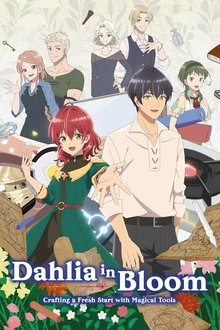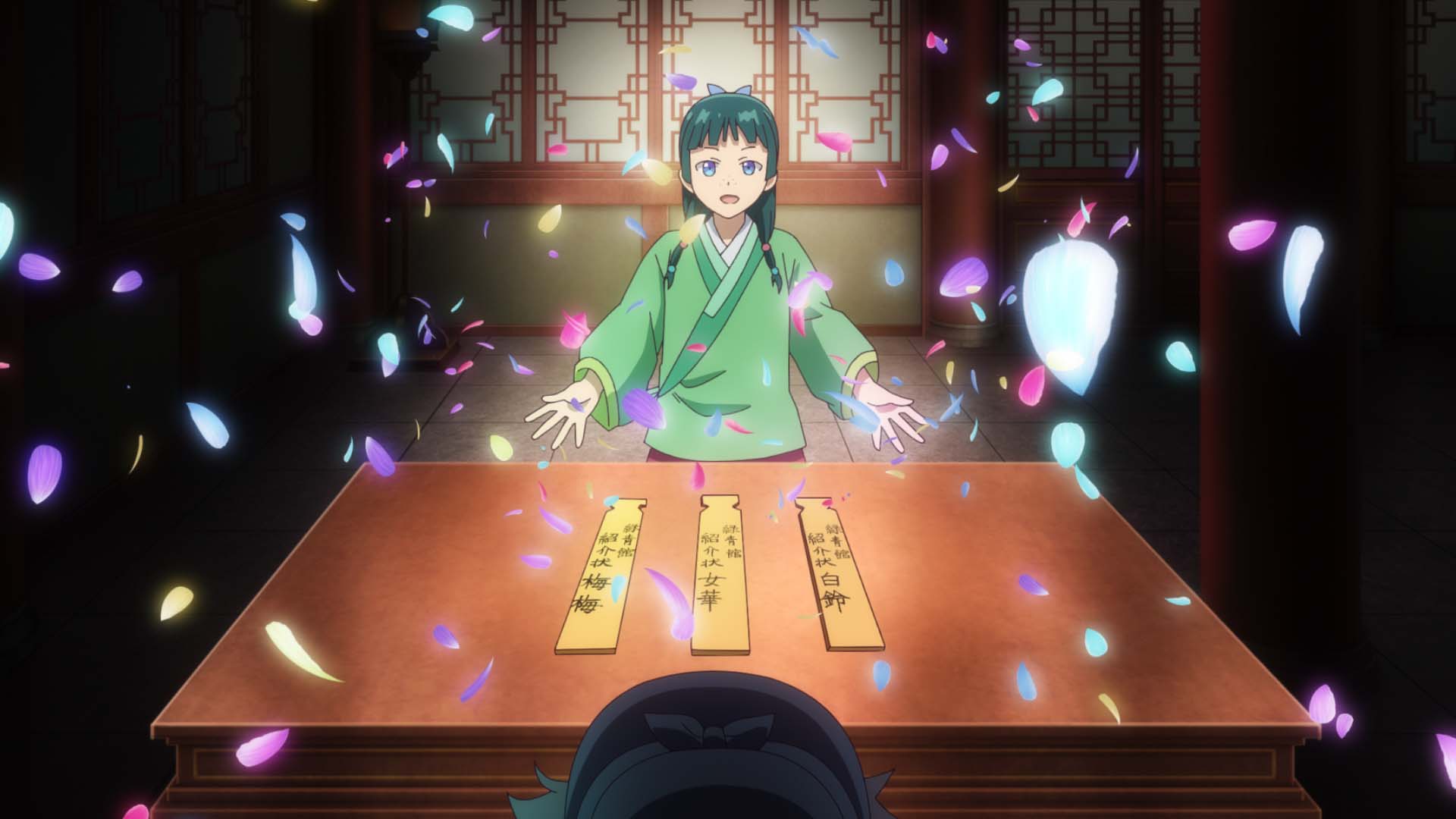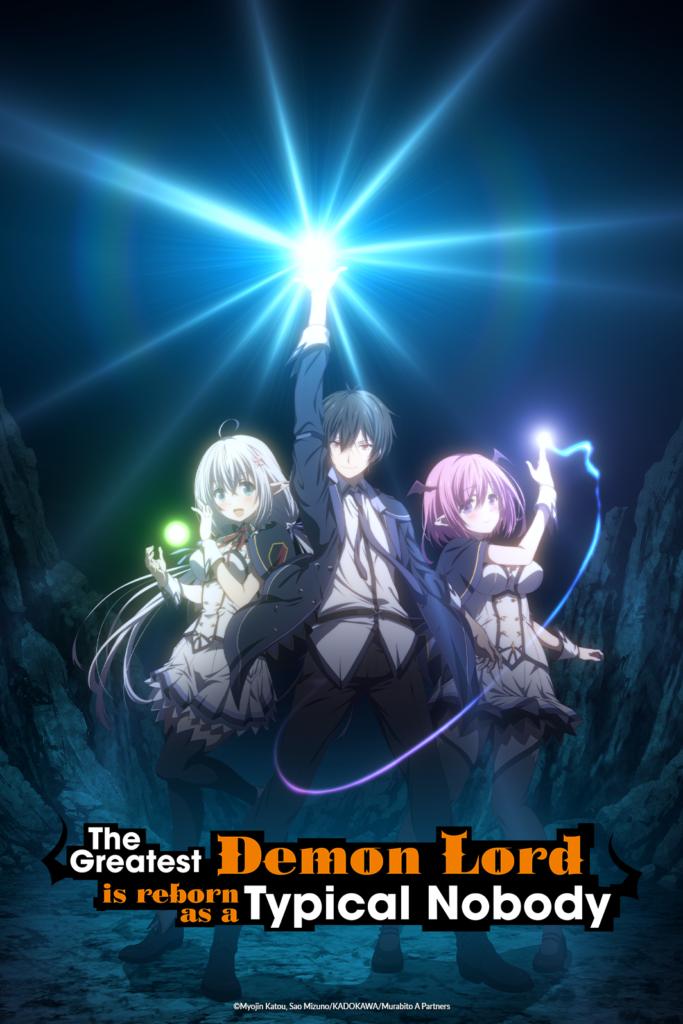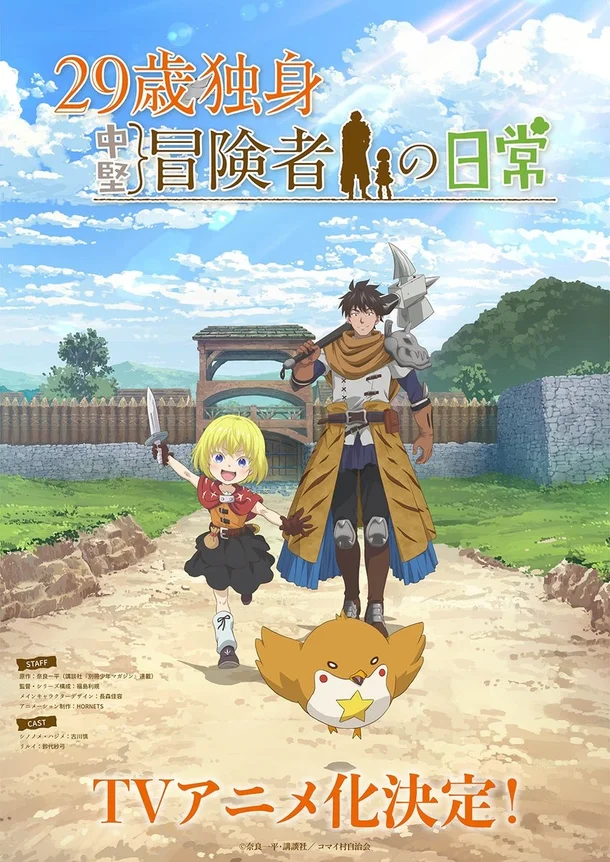🌸 Dahlia in Bloom: Crafting Magic, Mending Self A Deep Dive into a Gentle Isekai
Some stories begin with explosions or monsters.
This one begins with exhaustion.
A woman who gave everything to her work — her time, her youth, her heart — wakes up in another world. Not as a hero, not as a savior, but as a craftswoman.
And instead of fighting for glory, she builds something better: a new life.
About choosing creation over destruction, and love over bitterness.
A slow, gentle story that reminds us: healing is also magic.
This isn’t a fantasy about power. It’s about peace.
Table of Contents
-
What is Dahlia in Bloom? Origins & Adaptations
-
Dahlia’s Story: Premise & Plot Highlights
-
Characters & Relationships: Growth, Heartache & Hope
-
Magic, Craft & Tools: The Art of World-Building
-
Themes: Overwork, Self-Worth, Independence, and Reinvention
-
Visuals, Animation & Sound: How It Feels to Bloom
-
Strengths & Weaknesses: What Works & What Could Be Better
-
Audience Reception & Impact
-
Why Dahlia in Bloom Matters in 2024-25 Isekai Landscape
-
FAQs About the Series
-
Final Reflections: What It Leaves You With
What is Dahlia in Bloom? Origins & Adaptations
Dahlia in Bloom: Crafting a Fresh Start with Magical Tools (Japanese title Madōgushi Dariya wa Utsumukanai: Kyō kara Jiyū na Shokunin Raifu) is a light novel series by Hisaya Amagishi, illustrated by Kei.
-
It began as a web novel on Shōsetsuka ni Narō in April 2018.
-
It was later picked up for print by MF Books (Media Factory), starting in October 2018.
-
There are multiple manga adaptations: one by Kamada and another, “Magic Artisan Dahlia Wilts No More,” by Megumi Sumikawa.
-
The anime television adaptation was produced by Typhoon Graphics and Imagica Infos, aired from July 6 to September 21, 2024, for 12 episodes.
So it’s a fairly recent Isekai that already has significant material across novels, manga, and anime — which helps the story have depth and scope.
Dahlia’s Story: Premise & Plot Highlights
Premise
From a modern overworked life in Japan, Dahlia is reborn into a world of magical devices. She’s the daughter of a magic device inventor — a craftsman. Her early life in the new world is shaped by her father’s teachings and her innate talent for toolmaking.
Before she can settle into the life of a happy engagement, tragedy strikes: her father dies unexpectedly; her fiancé (her father’s apprentice) breaks off their engagement by confessing he loves someone else.
Turning Point
Rather than collapse, Dahlia resolves to live for herself. She rejects being defined by others’ expectations (engagement, status) and instead focuses on her craft: inventing magical tools, creating her own business, and embracing life on her own terms.
Along the way she meets Wolfred Scalfarotto, a knight who becomes both friend and partner in some ways. Through challenges (both personal, technical, business, and emotional), Dahlia grows not just as a toolmaker, but as a person who learns to stand tall.
Characters & Relationships: Growth, Heartache & Hope
Dahlia Rossetti
-
Background: Reincarnated, with memories of suffering under overwork. She grew up learning craft from her father (Carlo Rossetti), who was a magical tool craftsman.
-
Personality: Honest, hardworking, something of a perfectionist. Early self-worth issues because of her former life are contrasted with her determination in the new one. She resolves to no longer “bend her head” (emotionally or literally) in shame.
-
Abilities & Craft: She designs magical tools — everyday life aids (waterproof cloths, portable magical appliances, etc.) — blending her knowledge from the old life with magical techniques in the new. These tools are not just gimmicks; they reflect her identity and growth.
Supporting Characters
-
Wolfred Scalfarotto: The knight. Wrestles with his own duties, trauma, and expectations. His relationship with Dahlia is supportive, but not overly romantic-flashy. He’s a foil: bravery, duty, strength, and sometimes vulnerabilities.
-
Tobias Orlando: Former fiancé. Represents societal expectations, tradition, status. His betrayal (confessing love for another) sets Dahlia on her path.
-
Carlo Rossetti: Dahlia’s father. Inventor of magical tools. He’s her mentor and moral compass. His death is deeply felt and motivates a lot of Dahlia’s work.
-
Gabriella Jedda (and other guild/business contacts): They help Dahlia with business, style, connections. She learns not just the craft of tools, but the craft of running a company, fashion, social expectations.
Relationships are mostly gentle, realistic, and slow-burn. Dahlia’s romance is not the main focus; her personal independence, friendships, and growth dominate.
Magic, Craft & Tools: The Art of World-Building
One of the most charming aspects of Dahlia in Bloom is how it handles magic not as just flashy spells, but as craftsmanship.
Magic Device Crafting
-
Tools are everyday items: waterproof cloths, kitchen tools, items to ease daily chores, magical clothing, small appliances, or gadget-like magical tools.
-
Dahlia combines her old-world sensibilities (from her previous life) with magical techniques. This gives a uniqueness — the “maker” part is real, not just fantasy. She thinks about materials, function, usability, problems of the users.
Business & Guild
-
She forms her own company (Rossetti) and faces the challenges of being independent: sourcing materials, managing costs, negotiating guilds, satisfying customers, social expectations.
-
There’s also the political / social layer: nobility vs commoners, guild expectations, image, reputation. Dahlia’s choices reflect more than her own feelings: how she wants to be seen, how people expect her to behave.
Magic vs Mundane
The show (anime & novel) balances magical fantasy with “mundane” struggles: heartbreak, business stress, self-esteem, material shortages, reputation. This makes Dahlia’s journey feel grounded.
Themes: Overwork, Self-Worth, Independence, and Reinvention
From Overwork to Rebirth
-
Dahlia’s past life as an overworked office worker isn’t just backstory — it colors her worldview. Work becomes more meaningful now, but she often reflects on what went wrong before. Learning what rest, what joy, and meaningful work mean is central.
Identity & Self-Worth
-
She deals with feeling less than: expectations, trying to please, hiding her natural self (e.g. dyeing her hair, dressing plain) to fit what her fiancé expected. Then after betrayal, she returns to her authentic self.
-
Her motto (not looking down / refusing to hang her head) is more than symbolic — it’s her mission.
Independence & Purpose
-
Choosing to focus on her craft instead of relying on marriage or outside validation. Building business. Facing failures. Learning from them.
Grief, Loss & Moving On
-
The death of her father, the betrayal by fiancé. These are painful, but not the end. The narrative shows mourning, but also healing and forging new dreams.
Female Lead, Not Supporting Role
-
Dahlia is center. She isn’t defined by romance. Her value lies in her skill, her determination, her personal values. This is inspiring.
Visuals, Animation & Sound: How It Feels to Bloom
(Applies mainly to the anime adaptation, summer 2024)
Animation Studios & Staff
-
Produced by Typhoon Graphics & Imagica Infos.
-
Director: Yōsuke Kubo. Screenplay by Yuichiro Higashide. Character design by Satomi Kurita. Music by Kow Otani.
Themes & Songs
-
Opening theme: Chiisana Tsubomi by Nako Misaki — gives a fresh, budding feeling, aligning with Dahlia’s new life.
-
Ending theme: Glitter by Marina Horiuchi. Likely more reflective / gentle.
Aesthetic & Atmosphere
-
The visuals embrace a soft, warm palette when Dahlia is crafting, with detailed textures on magical tools, forests, workshops. Scenes of domestic life, work, and quiet forest gathering are given breathing space.
-
Slow scenes: gathering materials, designing tools, business conversations. Less high-action, more slice-of-life, with emotional beats.
-
Sound design: gentle background ambient noise, workshop clinks, magical hums, soft music underscoring emotional scenes. These subtle touches help make Dahlia’s world immersive.
Strengths & Weaknesses: What Works & What Could Be Better
| What Works Well | What Could Feel Weak or Limited |
|---|---|
| Heartfelt protagonist – Dahlia is very relatable; her flaws make her human, her growth is inspiring. | Pacing can feel slow for viewers expecting action or big fantasy battles. It leans more slice-of-life than battle heavy. |
| Magic craftsmanship – the creativity in magical tool design is refreshing among isekai fantasy. | Magic system details aren’t always deeply explained. Some inventions may feel deus ex machina if overused. |
| Emotional arcs – heartbreak, betrayal, rebuilding are treated with care. | Some supporting characters are less fleshed out; romantic arcs are subtle, not everyone may like that. |
| Independent lead, empowerment theme – Dahlia isn’t passive. Her taking charge, starting her company, standing for herself are strong. | The conflict often comes from internal or business / social pressures, which may feel low stakes to those hoping for grand quests. |
| Art and music – warm, inviting scenes; songs align with tone. | Some animation inconsistencies reported by viewers in certain frames or lighting (though this is common in many productions). |
Audience Reception & Impact
-
The light novel has sold very well: over 3.4 million copies in circulation.
-
It’s been consistently ranked high in Kono Light Novel ga Sugoi! guidebook: 2021, 2022, 2023, and reached #1 in 2025 in tankōbon/novel category.
-
Manga adaptation reviews say the art is lovely, characters charming, though some feel the story is generic in concept but elevated by execution.
-
Audience feedback: many like how wholesome it is, how Dahlia’s work ethic and kindness are inspiring; also that it soothes rather than excites — good for fans of calmer, emotional isekai.
Why Dahlia in Bloom Matters in the 2024-25 Isekai Landscape
Isekai (rebirth/parallel worlds) is a saturated genre. But many stories are about fighting monsters, leveling up, power fantasies. Dahlia in Bloom stands out because:
-
It’s not about power. It’s about craft, artistry, purpose.
-
It’s healing-oriented: heartbreak, loss, rebuilding, not revenge or conquest.
-
Female empowerment handled gently, not through spectacle but everyday dignity.
-
Appeals to those who want slow isekai, cozy fantasy, maybe even maker fantasy.
-
Bridge between fantasy and mundane: solving real problems (business, reputation, grief, social expectations) through magical craft.
FAQs About the Series
Here are common questions viewers/readers might have:
Q1. How many volumes / episodes are there?
Light novels: 12+ volumes plus side story collections as of early 2025. Manga: multiple adaptations. Anime: 12 episodes (Summer 2024 season).
Q2. Is romance a major part or more of a subplot?
Romance is present, but not the central conflict. It grows gradually (Wolfred / Dahlia) but the main focus is Dahlia’s personal growth, her craft, business, independence.
Q3. Do I need to read the light novel / manga to understand the anime?
The anime covers the main arcs fairly well. But the light novel provides more internal monologue, more detail about inventions, more side plots, business, guild politics. For deeper immersion, light novel is recommended.
Q4. How intense is the fantasy / magic world?
Magic is present but gentle. The fantasy is not combat-heavy or dark fantasy. There are moments of grief, betrayal, social expectation. But it’s much more comforting, hopeful than epic or violent.
Q5. Is Dahlia in Bloom suitable for all ages?
Recommended for teens and older (12+), because of themes like loss, business failure, breakup, responsibility. But it’s generally mild in terms of violence or gore.
Q6. What themes or messages does it leave you with?
Some of the core takeaways: self‐worth comes from within, not from others’ opinions; heartbreak can be a catalyst; work that you love can heal you; it’s possible to start over, even after betrayal and loss.
Final Reflections: What It Leaves You With
By the end of Dahlia in Bloom, you may not feel like a fantasy heroine, but you’ll feel seen. Seen for every quiet dream, every small invention, every act of drawing strength from small things.
Dahlia’s journey is a reminder that sometimes, the most magical kind of power isn’t over monsters — it’s over your fear to try again. Her tools, her inventions, her business: they are metaphors. Each tool she crafts is part of her healing, part of her declaration that she won’t hang her head anymore.
When she blooms, it’s not perfect. There are missteps. There is regret. But there is dignity. And beauty.









